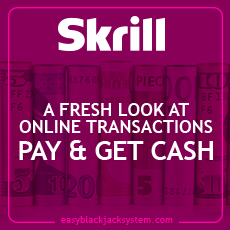Secure Your Casino Wallet Funds Safely and Quickly
Activate two-factor authentication immediately to add a strong barrier against unauthorized access. This simple step reduces the risk of account breaches by requiring a secondary code, usually sent to your mobile device, creating an additional layer of defense beyond just a password.
To ensure the security of your casino wallet, it is vital to adopt advanced security measures that protect your funds from unauthorized access. One key step is to activate multi-factor authentication, which adds an extra layer of security beyond just a password. Regularly updating your passwords with unique combinations is also essential. Additionally, monitoring your transaction history can help detect any suspicious activity early. Consider using reputable payment methods known for their security features. For guidance on how to safeguard your casino wallet effectively, explore our detailed resources on this topic at wildrobin-online.com.
Use transaction limits within your e-wallet settings to control the maximum amount transferred during a single session. This limits exposure in case of account compromise and helps maintain control over your accessible balance during high-frequency activities.
Regularly update your login credentials with complex, unique passwords generated by a trusted password manager. Avoid reusing passwords across different platforms to prevent domino effects if one account is compromised elsewhere.
Enable alerts for all account activity, including login attempts and withdrawals. Immediate notifications allow you to respond quickly to suspicious behavior, reducing the window of opportunity for potential theft or misuse.
Choose digital payment systems with strong encryption protocols and reputations for swift transaction processing. Prioritize platforms supporting secure SSL/TLS technologies and strong regulatory compliance to minimize delays and vulnerabilities.
Choosing Trusted Payment Methods for Casino Wallet Transactions
Opt for financial services regulated by recognized authorities such as the Financial Conduct Authority (FCA) or the Malta Gaming Authority (MGA). E-wallets like PayPal, Skrill, and Neteller offer strong encryption protocols and buyer protection policies, minimizing exposure to unauthorized access. Bank transfers processed through established institutions provide traceability and an added layer of safeguarding against fraud, despite occasionally longer processing times.
Cryptocurrencies, while gaining popularity, require extra caution; prioritize coins with transparent ledgers and reputable exchanges incorporating two-factor authentication and cold storage solutions. Prepaid cards also present a controlled spending option without linking directly to personal bank accounts, reducing risk in case of data breaches.
Confirm transaction fees and withdrawal limits upfront to avoid unexpected delays or blocked transfers. Verifying the service’s history of timely payouts and customer service responsiveness further reduces uncertainty. Combining method transparency with regulatory compliance significantly lowers the chances of financial discrepancy within the transaction process.
Setting Up Strong Authentication to Protect Your Wallet
Enable multi-factor authentication (MFA) immediately, combining something you know (password) with something you have (mobile device or hardware token). Avoid SMS-based codes due to their vulnerability; opt for authenticator apps like Google Authenticator or hardware solutions such as YubiKey.
Create a unique, complex password for your account. Use a minimum of 12 characters incorporating uppercase letters, lowercase letters, numbers, and special symbols. Password managers are indispensable tools for generating and storing credentials securely.
- Activate biometric verification where available. Fingerprint or facial recognition adds an additional biometric layer that’s difficult to replicate remotely.
- Limit login attempts and set up alerts for suspicious access attempts. Immediate notifications enable prompt response to unauthorized activities.
- Regularly review authorized devices and sessions. Remove any unrecognized or outdated connections to maintain control over access points.
- Detach login data from commonly breached platforms. Never recycle passwords from email, social media, or other services linked to sensitive accounts.
Adopt hardware tokens for recurring sign-ins if supported. These physical keys offer protection against phishing and credential theft by requiring physical interaction to authenticate.
Ensure that password reset mechanisms demand rigorous verification–security questions should be obscure and answers not easily guessable or searchable online.
Maintain all software up to date, including operating systems, browsers, and authentication apps, to benefit from the latest security patches.
Regularly Monitoring Wallet Activity for Unauthorized Access
Set up daily or weekly notifications for all transactions to detect irregularities immediately. Analyze transaction patterns for unusual withdrawals, deposits, or login attempts from unfamiliar IP addresses or devices. Employ multi-factor authentication logs to verify all access events beyond password entry.
Use software tools or platform features that provide detailed activity reports, including timestamps, access locations, and device fingerprints. Investigate any transactions exceeding usual amounts or occurring at atypical hours.
Maintain a log of approved contacts and payment destinations to rapidly identify any unrecognized recipients. If possible, activate restrictions limiting transfers to whitelisted addresses only.
In case of detected anomalies, disable access temporarily and notify the service provider to escalate security measures. Regular audits of transaction histories reduce exposure to unauthorized withdrawals and minimize financial exposure.
Using Encryption Tools to Safeguard Wallet Data
Implement Advanced Encryption Standard (AES) with a minimum key size of 256 bits for data at rest. AES-256 offers robust defense against brute-force attacks, ensuring transaction records and credentials remain confidential.
Apply Transport Layer Security (TLS) version 1.3 during data transmission to prevent interception and tampering. This protocol guarantees integrity and privacy between client interfaces and servers.
| Encryption Type | Purpose | Recommended Standards |
|---|---|---|
| AES-256 | Data encryption at rest | FIPS 197 |
| TLS 1.3 | Data encryption in transit | RFC 8446 |
| RSA 2025 | Key exchange and digital signatures | NIST SP 800-57 |
Employ hardware security modules (HSMs) or trusted platform modules (TPMs) to manage cryptographic keys offline. This mitigates exposure to malware and unauthorized retrieval.
Use multi-factor encryption strategies that combine symmetric and asymmetric algorithms. For example, utilize AES for bulk encryption and RSA for secure key distribution.
Routine rotation of encryption keys reduces the risk associated with key compromise. Define strict policies for automated key lifecycle management within security infrastructure.
Validate third-party encryption tools by checking compliance with recognized standards such as ISO/IEC 19790 or Common Criteria. Prioritize open-source solutions with transparent code audits whenever possible.
Implement end-to-end encryption for all user sessions to reduce attack surfaces, ensuring sensitive data remains unintelligible from origin to destination.
Quickly Responding to Suspicious Transactions in Casino Wallets
Immediately isolate any transaction deviating from established behavioral patterns by cross-referencing IP addresses, device fingerprints, and transaction amounts. Employ real-time monitoring tools equipped with anomaly detection algorithms that flag irregular withdrawals or deposits exceeding historical averages by 30% or more.
Suspend the related account activity pending verification. Require multi-factor authentication re-validation focused on biometric or dynamic token input to confirm user identity before processing further operations.
Notify the user instantly through multiple communication channels, such as email and SMS, outlining the suspicious activity and urging confirmation or cancellation within a strict 15-minute window. Incorporate automated escalation protocols that alert specialized fraud response teams if no user response occurs.
Maintain a detailed audit trail of flagged transactions, including timestamps, IP logs, and user responses, to facilitate forensic analysis. Regularly update internal risk scoring systems based on emerging fraud patterns and integrate third-party fraud intelligence feeds to enhance detection precision.
Ensure rapid coordination with payment processors and regulatory bodies to freeze or reverse compromised transfers, reducing potential financial exposure. Continuous employee training on emerging transaction threats strengthens overall incident responsiveness and mitigation capacity.
Backing Up Wallet Information to Prevent Data Loss
Create multiple encrypted copies of your private keys or seed phrases and store them in physically separate locations. Paper backups kept in fireproof and waterproof containers reduce risk of hardware failure or cyberattacks.
Use hardware wallets that offer secure export options for recovery seeds. Ensure the backup phrase is never stored unencrypted on internet-connected devices.
- Write down the mnemonic phrase precisely, verifying each word and its order.
- Store at least two independent backups – for example, one off-site safe deposit box and one home safe.
- Consider metal backup plates resistant to water, fire, and corrosion for long-term preservation.
- Use a password manager with strong encryption only if it supports offline access and multi-factor authentication.
Test your recovery workflow regularly by restoring your access on a secondary device. This confirms the accuracy of the backup and familiarity with the retrieval process.
Update backups promptly after any change to wallet credentials or software upgrades to avoid data mismatch or loss.

 I found about the Easy BlakcJack System about a year ago, nowadays I'm a stay at home dad making $2000 a week, using the Easy BlakcJack System.
I found about the Easy BlakcJack System about a year ago, nowadays I'm a stay at home dad making $2000 a week, using the Easy BlakcJack System.
